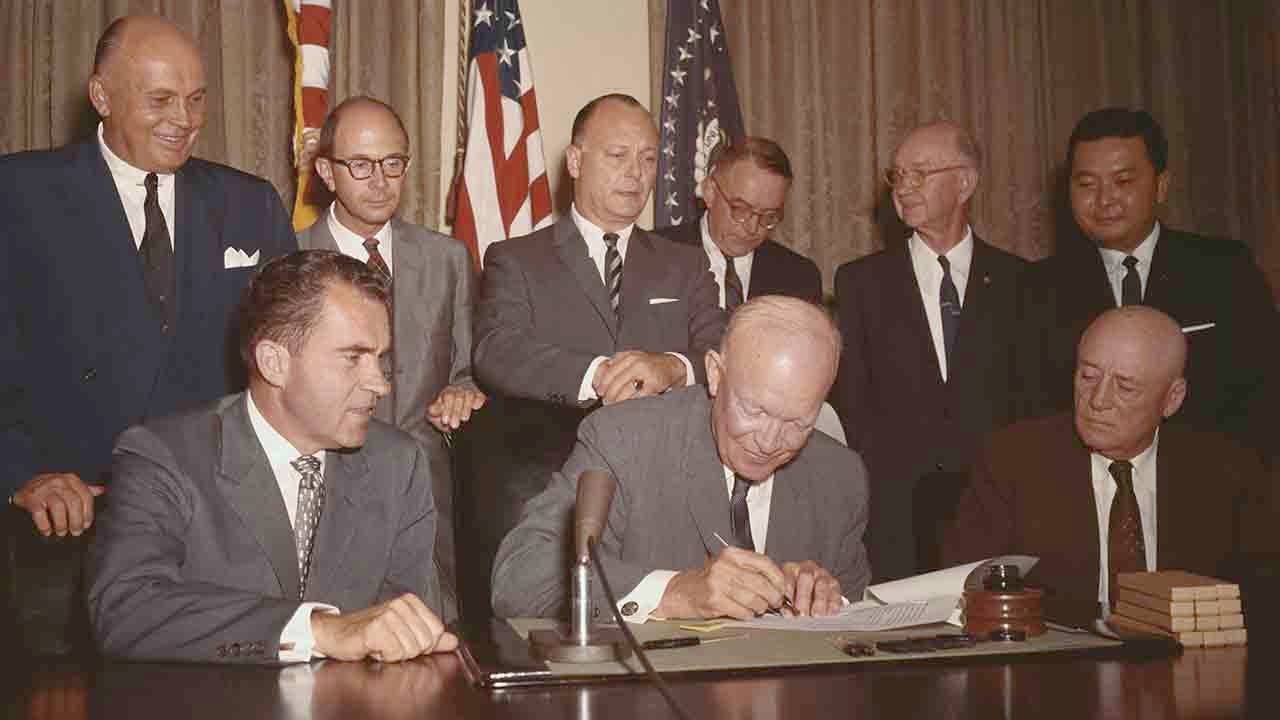On this notable day in history, August 21, 1959, President Dwight Eisenhower solidified Hawaii as the 50th state by signing a proclamation. With grace and optimism, he expressed his warm welcome to Hawaii, highlighting the “truly historic” nature of this occasion as the second state added to the United States that year.
Eisenhower conveyed his wishes for Hawaii’s prosperity, security, and happiness, emphasizing the importance of a closer relationship among all 50 states. He acknowledged the significant shift in Congress, symbolized by the replacement of delegates with senators and congressmen. However, the position of “delegate” would later return in the 1970s, currently represented by the District of Columbia, American Samoa, U.S. Virgin Islands, Guam, and the Northern Mariana Islands.
The path to Hawaiian statehood was paved by the Hawaii Admission Act, which became law in March 1959. Section 7b of this act mandated that Hawaiians be given the opportunity to vote on their desire to join the United States as a state. The bill precisely defined Hawaii as “all the islands, together with their appurtenant reefs and territorial waters, included in the Territory of Hawaii.” With an overwhelming electoral turnout on June 27, 1959, Hawaiians affirmed their decision to become a state, marking a historic milestone.
However, the story of Hawaii’s journey to statehood extends far beyond 1959. Over 1,500 years ago, Polynesians first arrived on the islands, setting the stage for the region’s rich history. Then, in 1778, Captain James Cook became the first European to step foot on the Hawaiian Islands, naming them the Sandwich Islands. Despite Cook’s tragic death one year later, the islands continued to evolve under the rule of King Kamehameha I and subsequent monarchs.
In 1887, significant constitutional changes occurred with the signing of the Constitution of the Kingdom of Hawaiʻi, which curtailed the authority of the Hawaiian monarchy. This marked the start of a gradual shift in power that ultimately led to the overthrow of Queen Liliʻuokalani in 1893. In the following years, the Republic of Hawaii was established, led by Sanford Dole, until the creation of the Territory of Hawaii in 1900.
Hawaii encountered worldwide attention and tragedy on December 7, 1941, when Japanese forces attacked the U.S. Navy base at Pearl Harbor. This catastrophic event claimed the lives of 2,403 American service members and civilians, forever etching itself in history and serving as a catalyst for the United States’ entry into World War II.
Today, August 21 is celebrated as “Statehood Day” in Hawaii, honoring the day when Hawaii officially became the 50th state. This momentous occasion, although now observed on the third Friday in August, serves as a reminder of Hawaii’s unique journey and its contribution to the union of states.
Denial of responsibility! VigourTimes is an automatic aggregator of Global media. In each content, the hyperlink to the primary source is specified. All trademarks belong to their rightful owners, and all materials to their authors. For any complaint, please reach us at – [email protected]. We will take necessary action within 24 hours.


